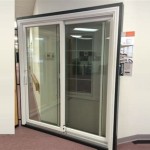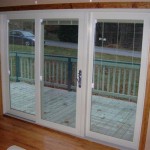Poured Concrete Patio: A Comprehensive Guide
A poured concrete patio represents a durable and versatile outdoor living space. It offers a solid foundation for various activities, from relaxing and dining to entertaining guests. The process of installing a poured concrete patio requires careful planning, preparation, and execution to ensure a long-lasting and aesthetically pleasing result. This guide details the essential aspects of poured concrete patios, covering design considerations, installation steps, maintenance requirements, and cost factors.
Design Considerations for Poured Concrete Patios
Planning the design of a concrete patio involves several key considerations that influence its functionality, appearance, and overall suitability for the intended space. These factors should be carefully evaluated before commencing the installation process.
Size and Shape: The size of the patio should align with the intended use and the available space. Consider the number of people who will regularly use the patio and the furniture that will be placed on it. Common shapes include rectangular, square, circular, and freeform designs. The shape should complement the architectural style of the house and the surrounding landscape.
Location: The location of the patio is crucial. Ideally, it should be easily accessible from the house, preferably adjacent to a door or a set of sliding glass doors. Sun exposure is another important factor. Consider the time of day the patio will be used most frequently and choose a location that provides adequate shade during those hours. Drainage is also vital. The patio should be sloped slightly away from the house to prevent water from pooling.
Finish and Texture: Concrete offers numerous finishing options to enhance its aesthetic appeal. A smooth, broom-finished surface is a common choice, providing a non-slip texture. Other options include stamped concrete, which mimics the look of stone or brick, and exposed aggregate, which reveals decorative stones embedded in the concrete. The chosen finish should complement the overall design of the outdoor space.
Color: Concrete can be colored using integral pigments added to the mix or through staining or dyeing after the concrete has cured. Various colors are available, ranging from natural grays and browns to more vibrant hues. The color should harmonize with the house and the surrounding landscape. Darker colors can absorb more heat, while lighter colors reflect sunlight and stay cooler.
Permits and Regulations: Before starting any construction, it is essential to check local building codes and obtain necessary permits. Many municipalities have regulations regarding the size and placement of patios, as well as requirements for drainage and setbacks from property lines. Failure to comply with these regulations can result in fines or the need to remove the patio.
Installation Process of a Poured Concrete Patio
The installation of a poured concrete patio is a multi-step process that requires careful attention to detail. Proper execution of each step is crucial for ensuring a durable and aesthetically pleasing result.
Site Preparation: The first step is to prepare the site. This involves removing any existing vegetation, topsoil, and debris from the area where the patio will be located. The area should then be excavated to a depth of at least 6 inches, or more depending on local frost depth requirements. The excavated area should be compacted using a plate compactor to provide a stable base.
Base Layer: A base layer of gravel or crushed stone is then added to the excavated area. This layer provides drainage and helps to prevent the concrete from cracking due to frost heave. The base layer should be at least 4 inches thick and compacted using a plate compactor. Proper compaction is essential for providing a solid foundation for the concrete.
Formwork: Formwork is the framework that holds the concrete in place while it cures. It is typically made from lumber, such as 2x4s or 2x6s, and is secured with stakes. The formwork should be carefully aligned and leveled to ensure that the patio has the desired shape and slope. The top of the formwork should be set at the desired finished height of the patio.
Reinforcement: Reinforcement helps to strengthen the concrete and prevent cracking. Common reinforcement options include wire mesh and rebar. Wire mesh is a grid of steel wires that is placed within the concrete slab. Rebar is steel reinforcing bars that are tied together to form a grid. The type and amount of reinforcement will depend on the size and thickness of the patio, as well as local building codes.
Pouring the Concrete: The concrete should be poured evenly into the formwork, taking care to avoid air pockets. A concrete vibrator can be used to consolidate the concrete and remove air bubbles. The concrete should be screeded to level the surface and remove any excess concrete. Screeding involves dragging a straightedge across the surface of the concrete to create a smooth and level finish.
Finishing the Concrete: After the concrete has been screeded, it can be finished to create the desired texture. A broom finish is a common choice, providing a non-slip surface. Other options include stamped concrete, exposed aggregate, and troweled finishes. The finishing process should be done carefully to avoid damaging the concrete.
Curing the Concrete: Curing is the process of keeping the concrete moist so that it can properly hydrate and gain strength. Concrete should be cured for at least 7 days, and ideally for 28 days. Curing can be done by covering the concrete with plastic sheeting, spraying it with water regularly, or using a curing compound. Proper curing is essential for ensuring the long-term durability of the concrete.
Removing the Formwork: Once the concrete has cured, the formwork can be removed. The edges of the patio can then be smoothed and rounded over using a concrete edger. Any cracks or imperfections can be repaired using a concrete patching compound.
Maintenance and Cost Considerations
Maintaining a concrete patio involves regular cleaning and occasional repairs to ensure its longevity and aesthetic appeal. Understanding the costs associated with installation and maintenance is essential for budgeting purposes.
Cleaning: Concrete patios should be cleaned regularly to remove dirt, debris, and stains. A simple cleaning solution of soap and water can be used for general cleaning. For more stubborn stains, a pressure washer or a concrete cleaner may be necessary. Avoid using harsh chemicals or abrasive cleaners, as these can damage the concrete surface.
Sealing: Applying a concrete sealer can help to protect the patio from stains, water damage, and freeze-thaw cycles. Concrete sealers are available in various types, including penetrating sealers and topical sealers. Penetrating sealers penetrate the concrete and create a water-resistant barrier, while topical sealers form a protective film on the surface of the concrete. Sealers should be applied according to the manufacturer's instructions.
Repairs: Cracks and other imperfections can occur in concrete patios over time due to settling, temperature changes, and wear and tear. Small cracks can be repaired using a concrete patching compound. Larger cracks may require more extensive repairs, such as filling the crack with a concrete crack filler or overlaying the entire patio with a new layer of concrete.
Cost Factors: The cost of installing a poured concrete patio can vary depending on several factors, including the size of the patio, the thickness of the concrete, the type of finish, and the location. Site preparation costs, such as excavation and removal of existing materials, can also add to the overall cost. Labor costs will vary depending on the experience and skill of the contractor.
Material Costs: The cost of concrete, formwork, reinforcement, and finishing materials will also affect the overall cost of the patio. Concrete prices can vary depending on the type and quantity of concrete required. Formwork can be purchased or rented, and the cost will depend on the size and complexity of the formwork. Reinforcement costs will depend on the type and amount of reinforcement used.
Long-Term Value: While the initial cost of installing a concrete patio may seem high, it is a durable and long-lasting investment that can add value to the property. A well-maintained concrete patio can last for many years with minimal maintenance, providing a comfortable and attractive outdoor living space.
In conclusion, a poured concrete patio represents a significant enhancement to outdoor living, offering durability, versatility, and aesthetic appeal. Proper planning, execution, and maintenance are key to maximizing the benefits of this investment and ensuring a lasting and enjoyable outdoor space.

Diy Concrete Patio In 8 Easy Steps How To Pour A Cement Slab

Pouring Concrete Patio What Could Go Wrong With Doing It Yourself

How To Pour A Concrete Patio Learn About Pouring

42 Inspiring Stamped Concrete Patio Ideas Designs Backyard

Backyard Stained And Stamped Concrete Patios

How To Plan Pour Your Diy Concrete Patio Liberty Ready Mix

Tips For Pouring A Concrete Patio Fine Homebuilding

Pouring Concrete General Info Tips Local Contractors

Stamped Concrete Patio Q A Hamilton Park Home

Concrete Patio Pros And Cons
Related Posts








